Hoi An Ancient Town is a 15th – 16th century trading port, its diverse history is reflected in the architecture influenced by Vietnamese, Chinese, Japanese, Portuguese, Dutch, French, other European and Southeast Asian countries who used to trade at this important location. Wondering through the streets you could easily be mistaken for being in Spain or Portugal. It somewhat reminded me of the old buildings in Porto on a smaller scale; buildings with their elegant lines, art nouveau’esc designs – the distinctive mustard yellow paint now aged in the only way that pollution and time can achieve.
The area and town has been called many names through the ages, the locals called Cham (Champa people), were powerful and wealthy as they controlled the lucrative spice route during the 7th – 10th century. During the 16th – 17th century the town port expanded into and international harbour bringing people from Europe, India and greater Asia to trade, work and settle in what was then called Hai Pho (Seaside Town). Not only was this estuary town strategic in location, the waterways served as a perfect means of transport inland and throughout the area. Although it town had been established for hundreds of years it only became a formal port at the end of the 16th century lead in large degree by the Portuguese and the local Nguyễn Lord Nguyễn Hoàng, this was very much the birth of Hoi An.
Depending on which source of information you use, by the late 18th century Hoi An was considered one of the best, if not the best port for trading in Asia…nothing lasts forever. The region was split primarily into three groups; North, Middle and South Vietnam. The Tay Son Rebellion brought about the demise of Hoi An, with trade moving down South to Da Nang where the French were given exclusive rights to the port as compensation for supporting Emperor Gai Long. It seems to some degree that foreign influence was disliked, but impossible to stop. The compromise was to limit or in the very least control foreign influence, so French exclusivity seemed to kill two birds with one stone. Hoi An was forgotten about by people and time, reverting back to a small fishing village surrounded by remnants of its wealth and renowned past.
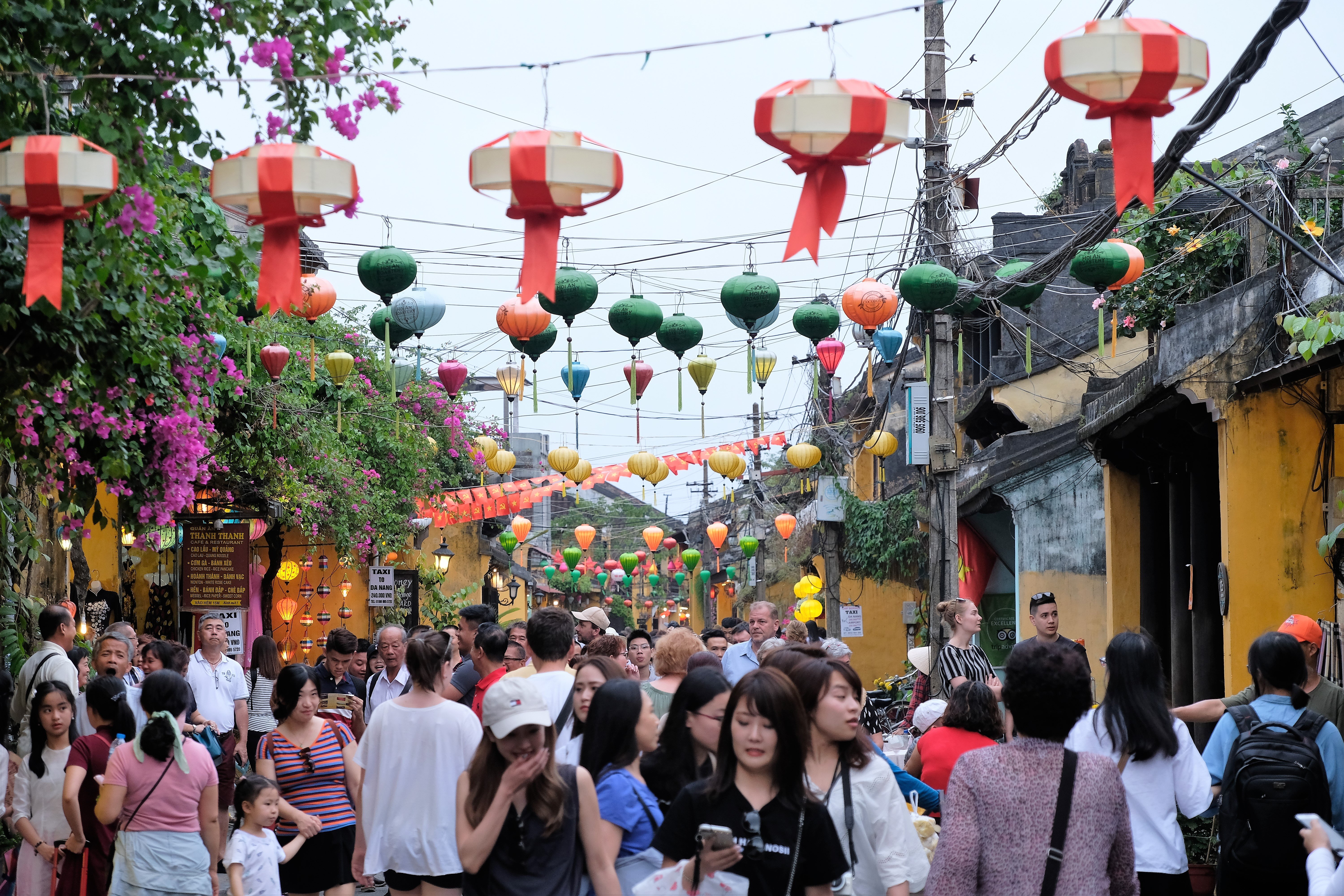
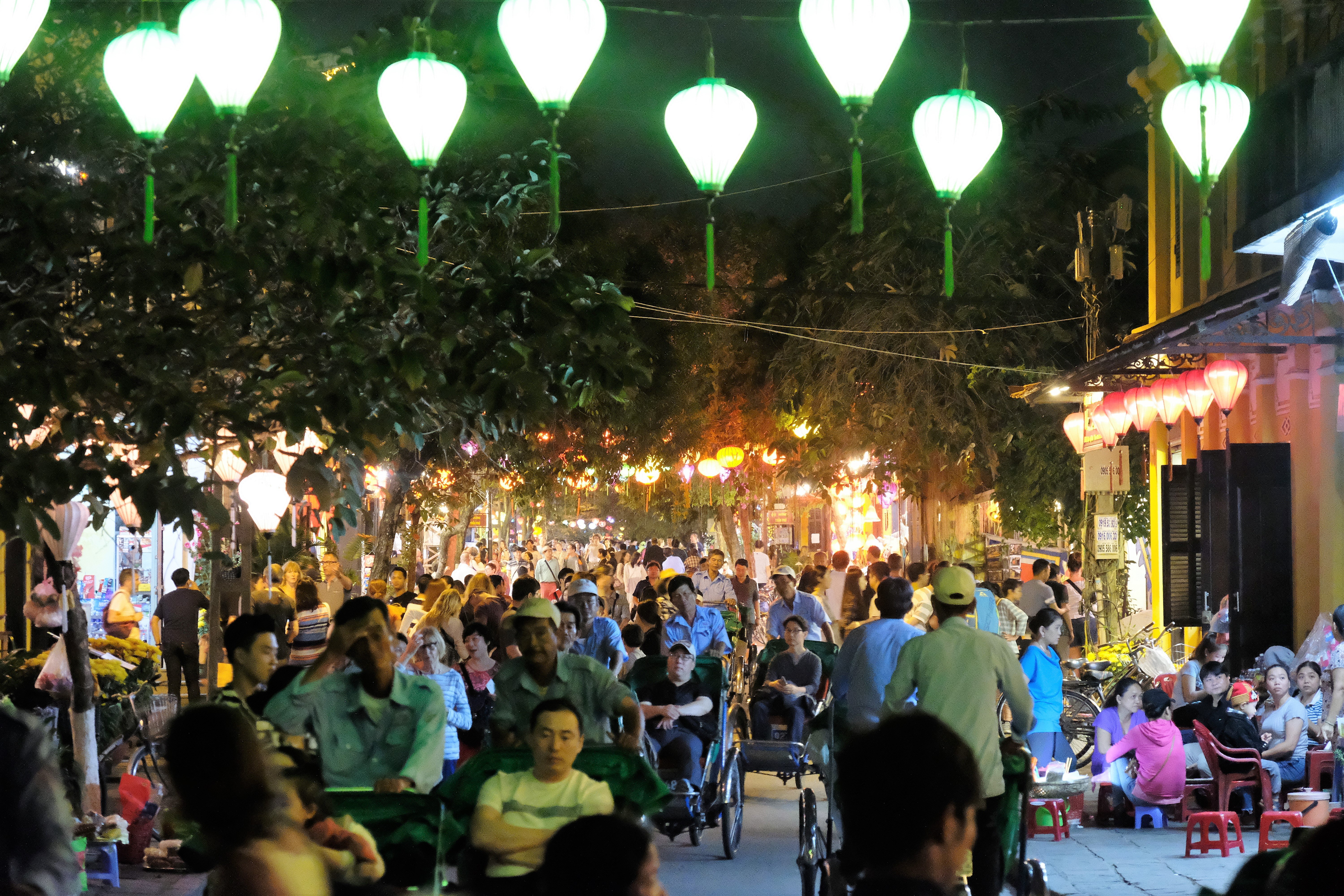
These days the mix of the past and present has made Hoi An a tourist destination, along with An Bang Beach at its doorstep it is fast becoming a prime destination in Vietnam. Like I had mentioned in my previous post about An Bang I spent my time mostly riding around the area between An Bang and Hoi An Ancient Town.
Hoi An Ancient Town
Hoi An Ancient, a UNESCO World Heritage site, the old town of Hoi An is both interesting, quaint and diverse with totally different atmospheres during the day and evening. I was going to say it’s not a large area, I suppose that’s true; by walking along the river you could walk from one end to the next in 20 minutes, but in my opinion it’s the roads parallel and perpendicular to the river that are the best. Now that Hoi An Ancient Town is a tourist hot spot the roads are filled with touristy shops selling trinkets, far from tacky though. Lanterns of assorted colours and shapes dangling across the street on string lines light up the roads at night of Hoi An Town, giving it an authentic Southeast Asian fell, almost an ambiance of an intimate carnival.
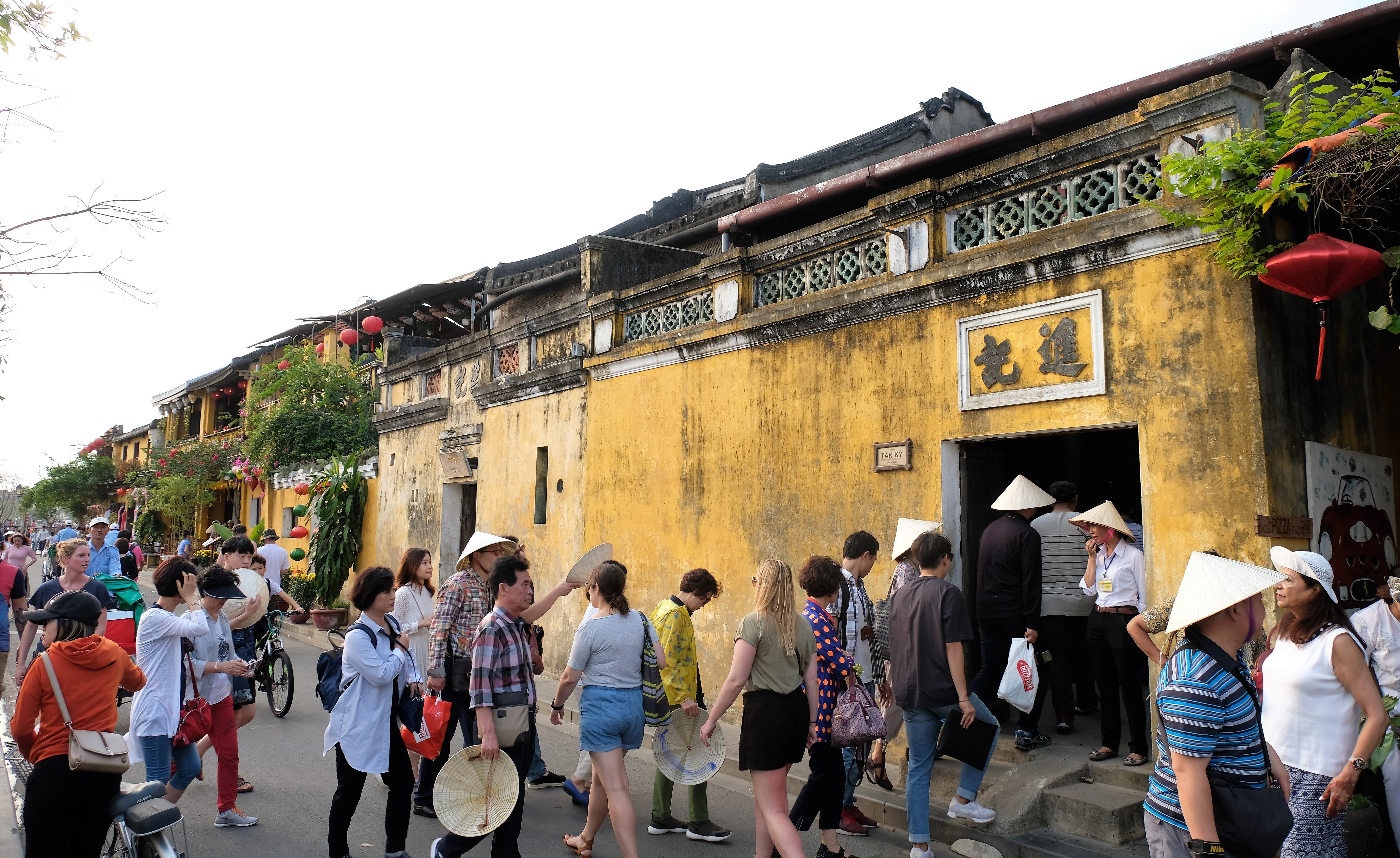
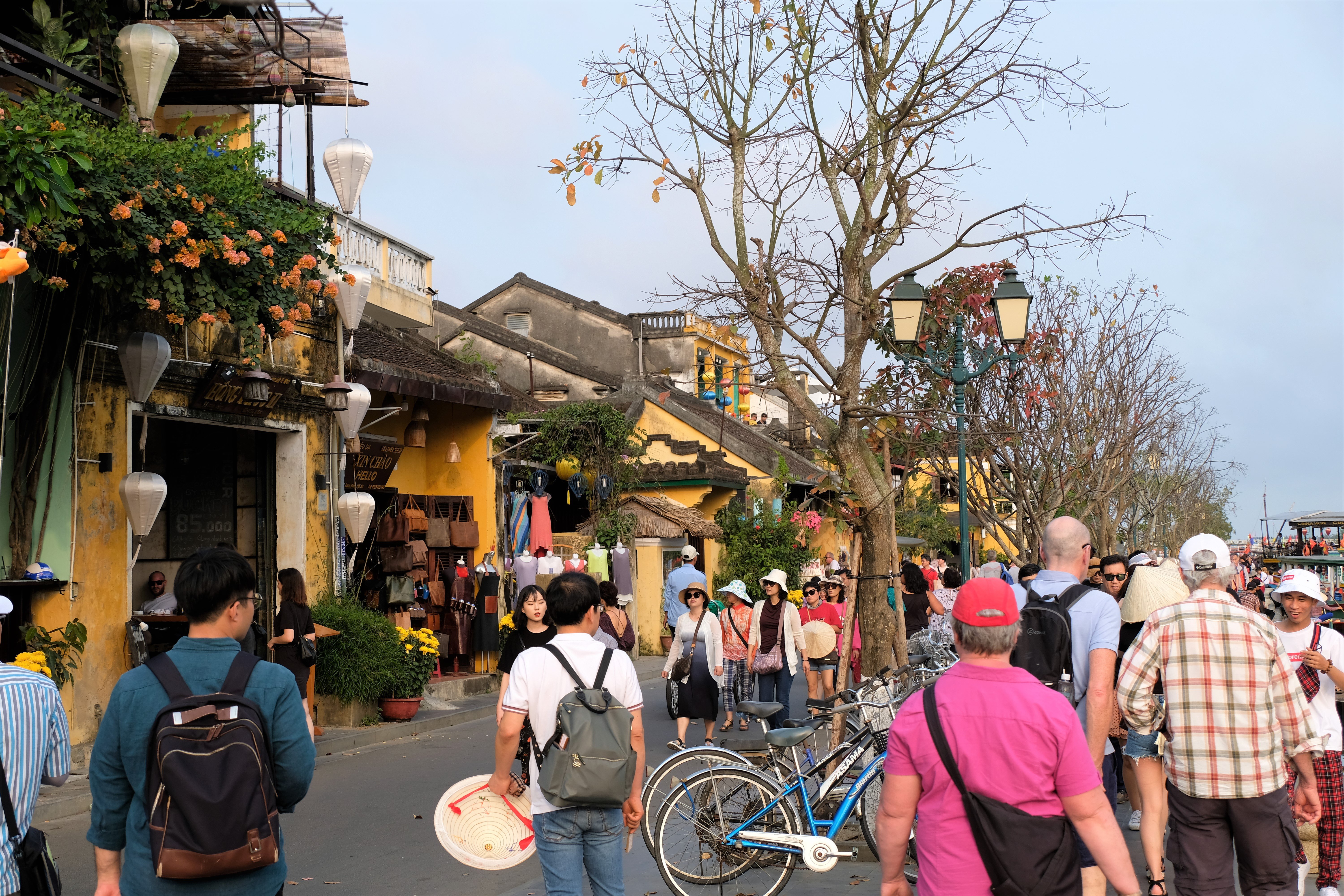
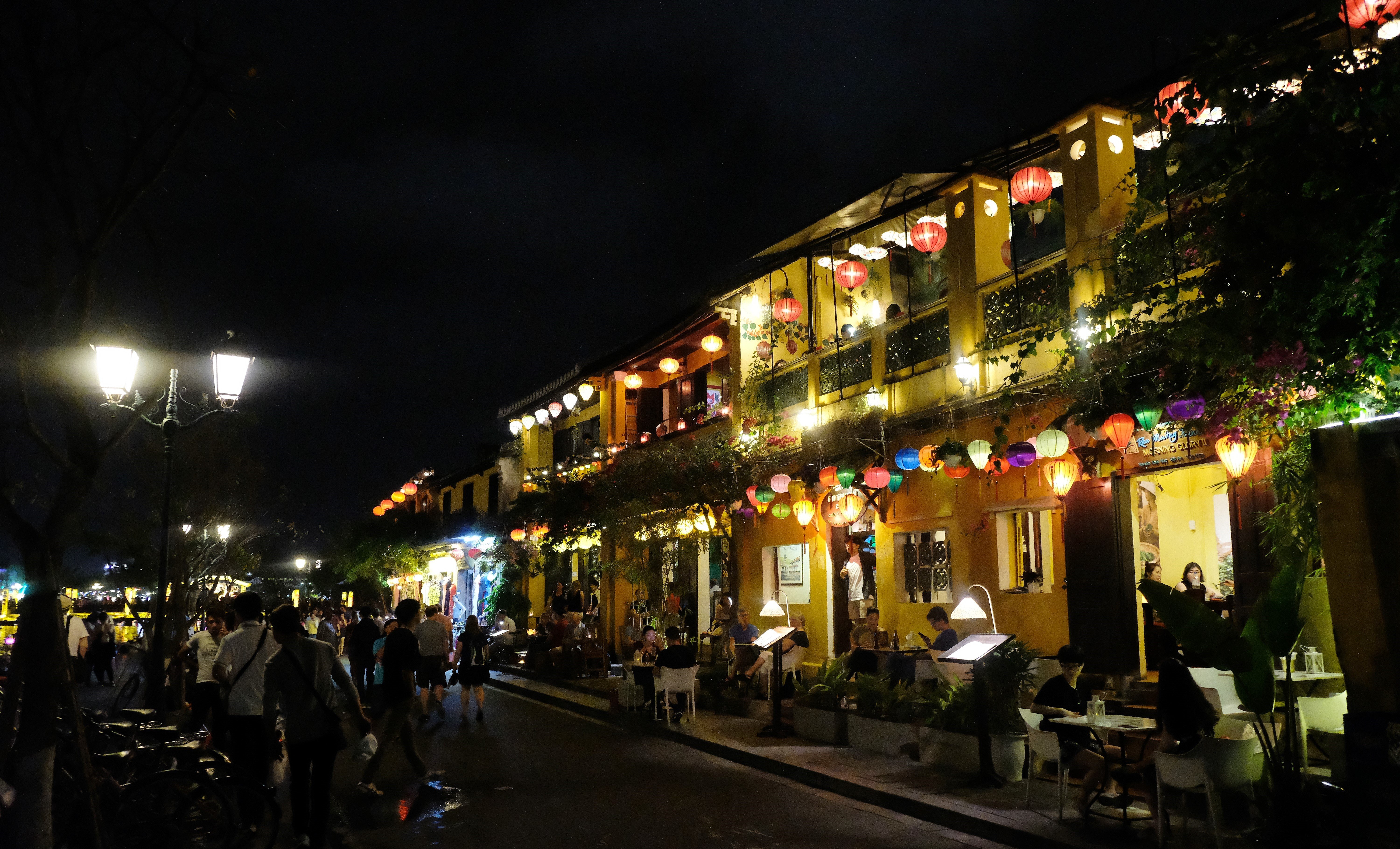
During the day there is a subdued buzz of activity in Old Town, still full of locals and tourists but not quite the same as the evenings. Most shops are open with a few waiting for later in the day or early evening to start their business day, at night everything is open, and visitors seem to double. Hoi An Ancient Town is closed to motorbikes and cars, a bonus, I don’t know when they introduced this but I would hate to have visited before then! Bicycles are allowed and so are rickshaws which vocally “hoot” to get people out of the way, it is so crowded that we tried to ride through on one occasion only, we gave up parked our bikes and walked…walking is much quicker and less stressful ?
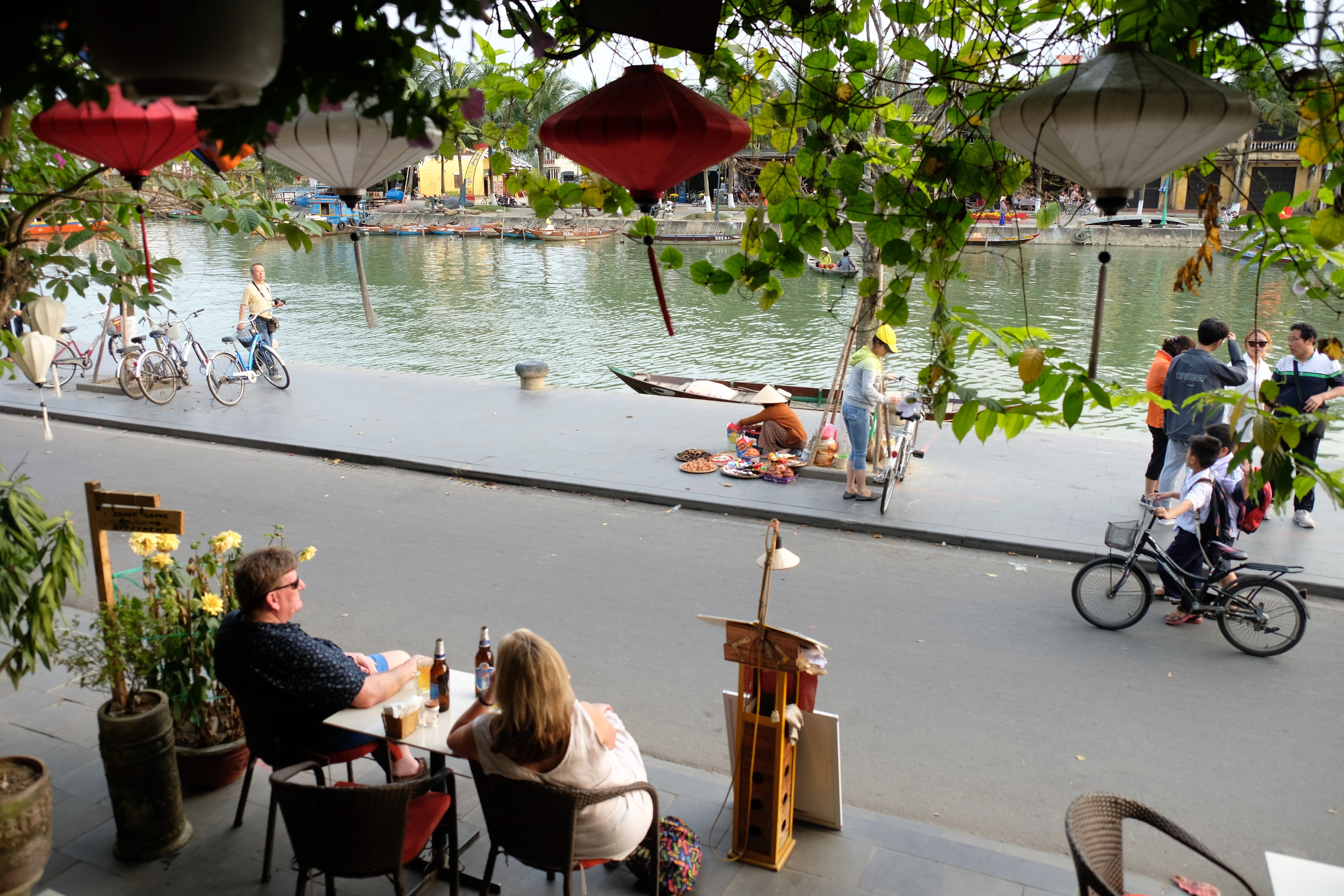
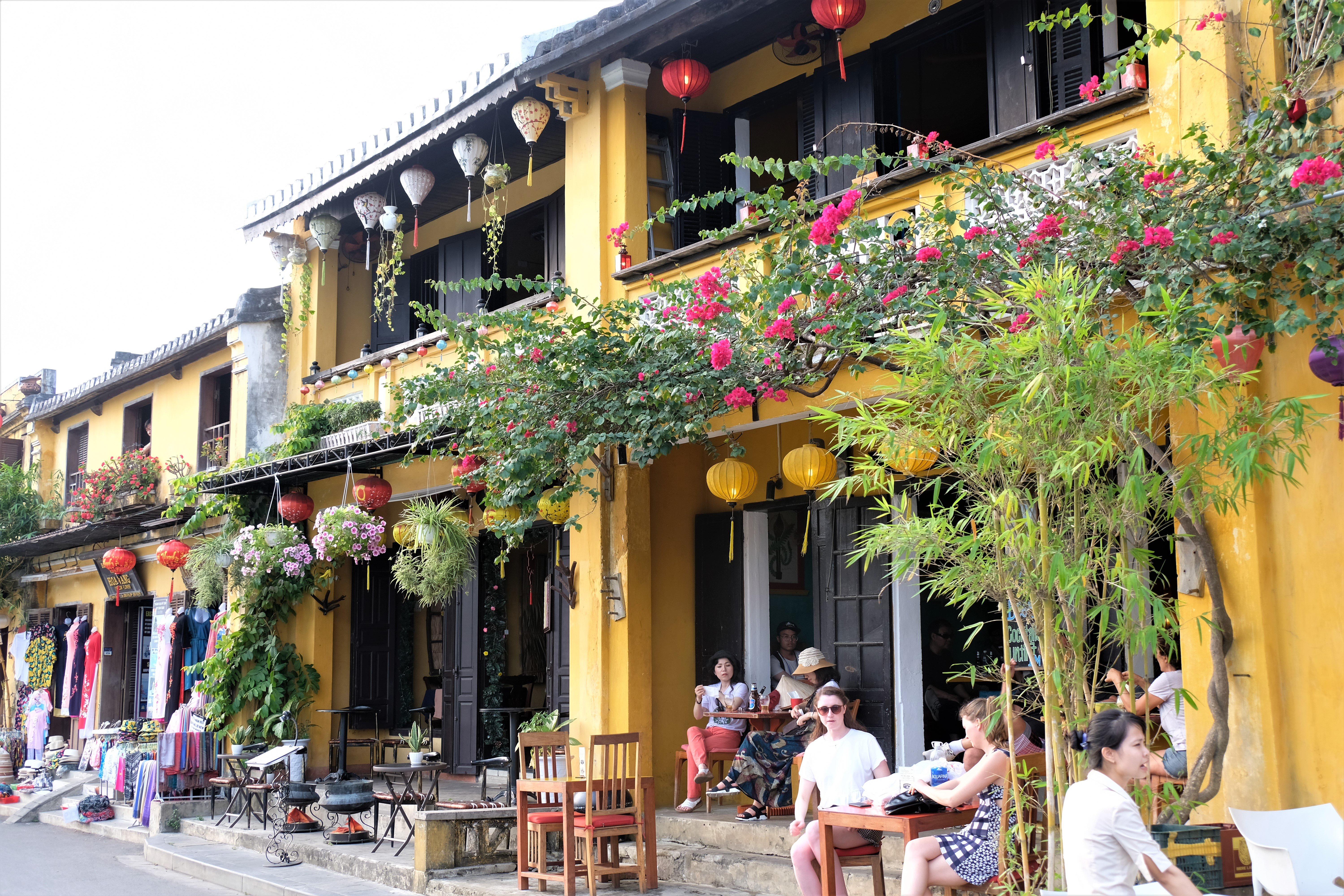
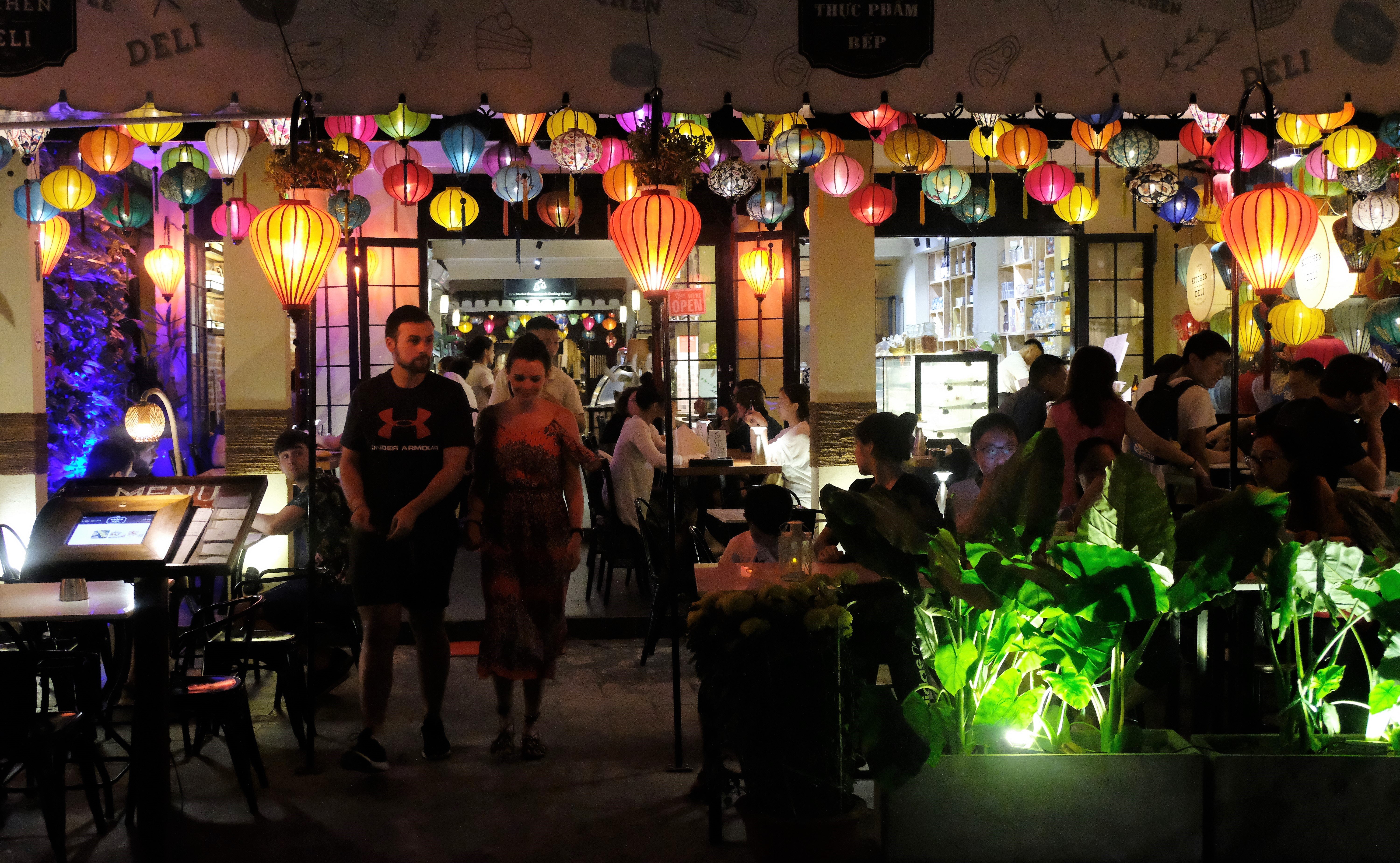
As with An Bang, life here is at a pace of its own…slow and slower, this is an authentic outdoor shopping centre for want of a better phrase. A shopping centre set in an intimate historic setting where branded names are nowhere near to be seen….to my relief! You could visit Hoi An Ancient Town for a day or many times like we did, each time seeing something different, many times we had dinner overlooking the river and ate while we watch the scenery of boats and people pass us by.
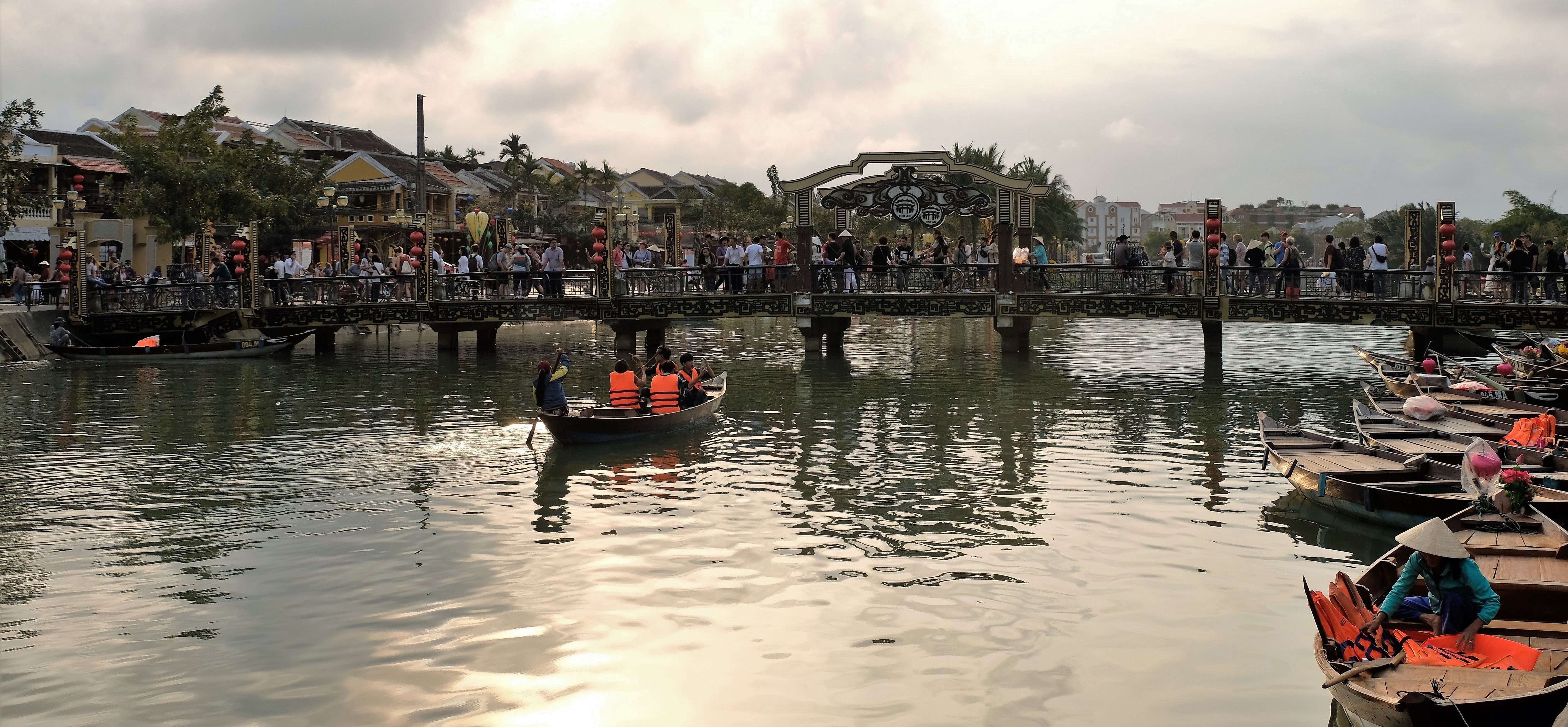
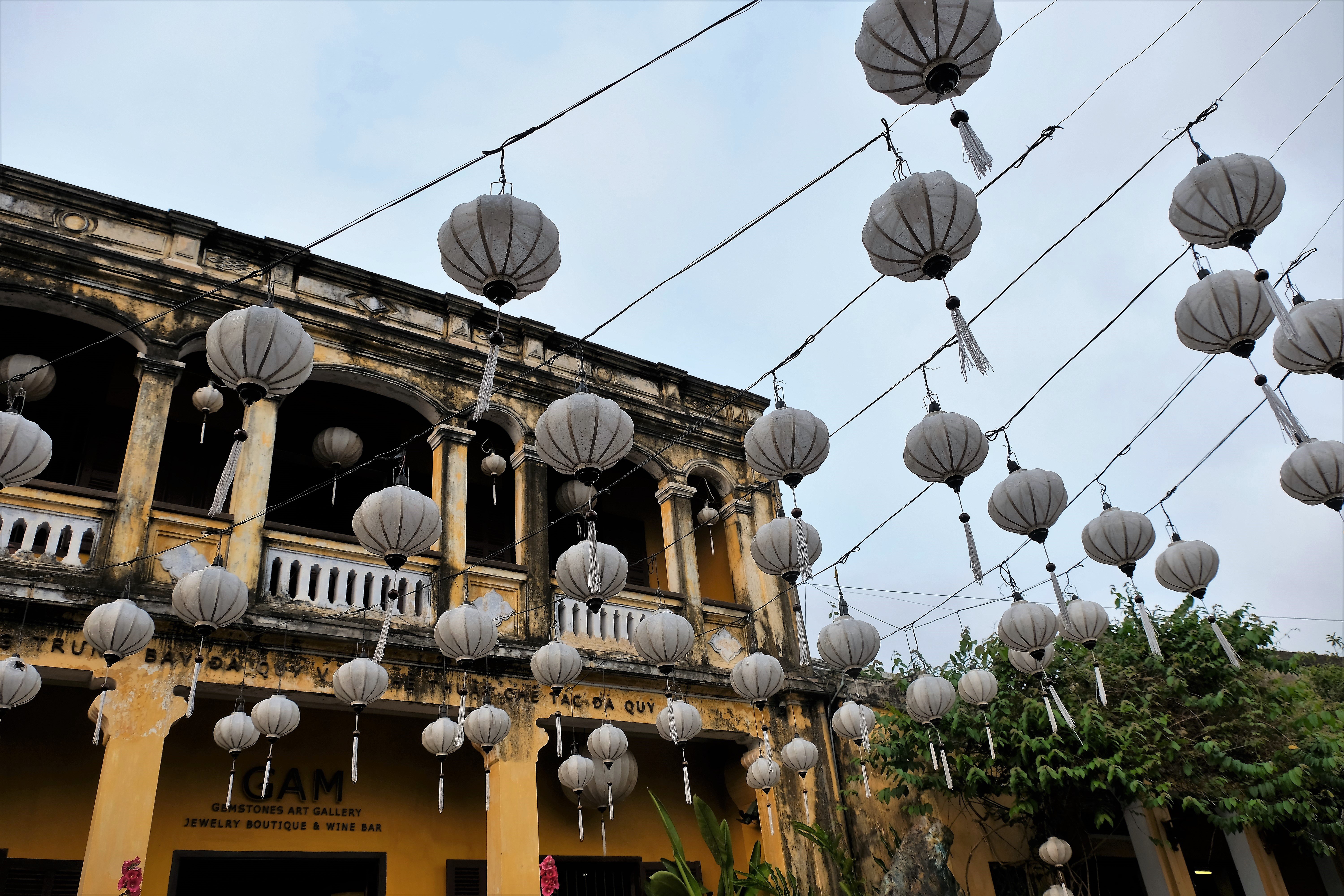
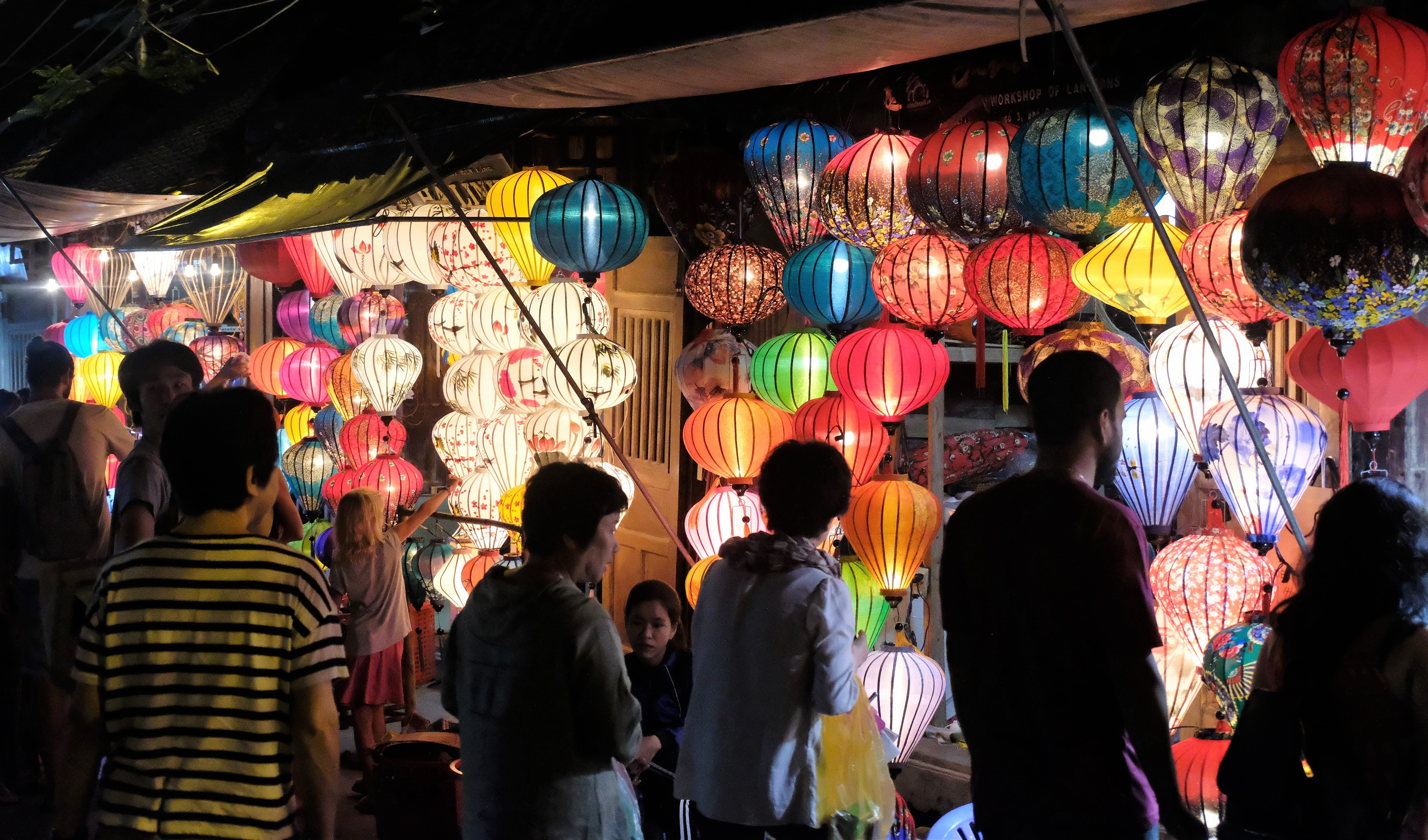
I’m sure I’ve mentioned it before, I love water, especially rivers and streams. The Thu Bon River still plays a vital role in the lives and livelihood of the people and the town. Where it passes through Hoi An Ancient Town it is used as part of the tourist attraction taking visitors on rides through the nicer parts of town. Lanterns used by the boats at night dot the river with faint colour, at a distance resembling coloured fireflies slowly skimming across the water. It seemed every evening something was happening in Old Town, at first I thought it was a coincidence but Micha & Kim said they are always celebrating something, just about always!
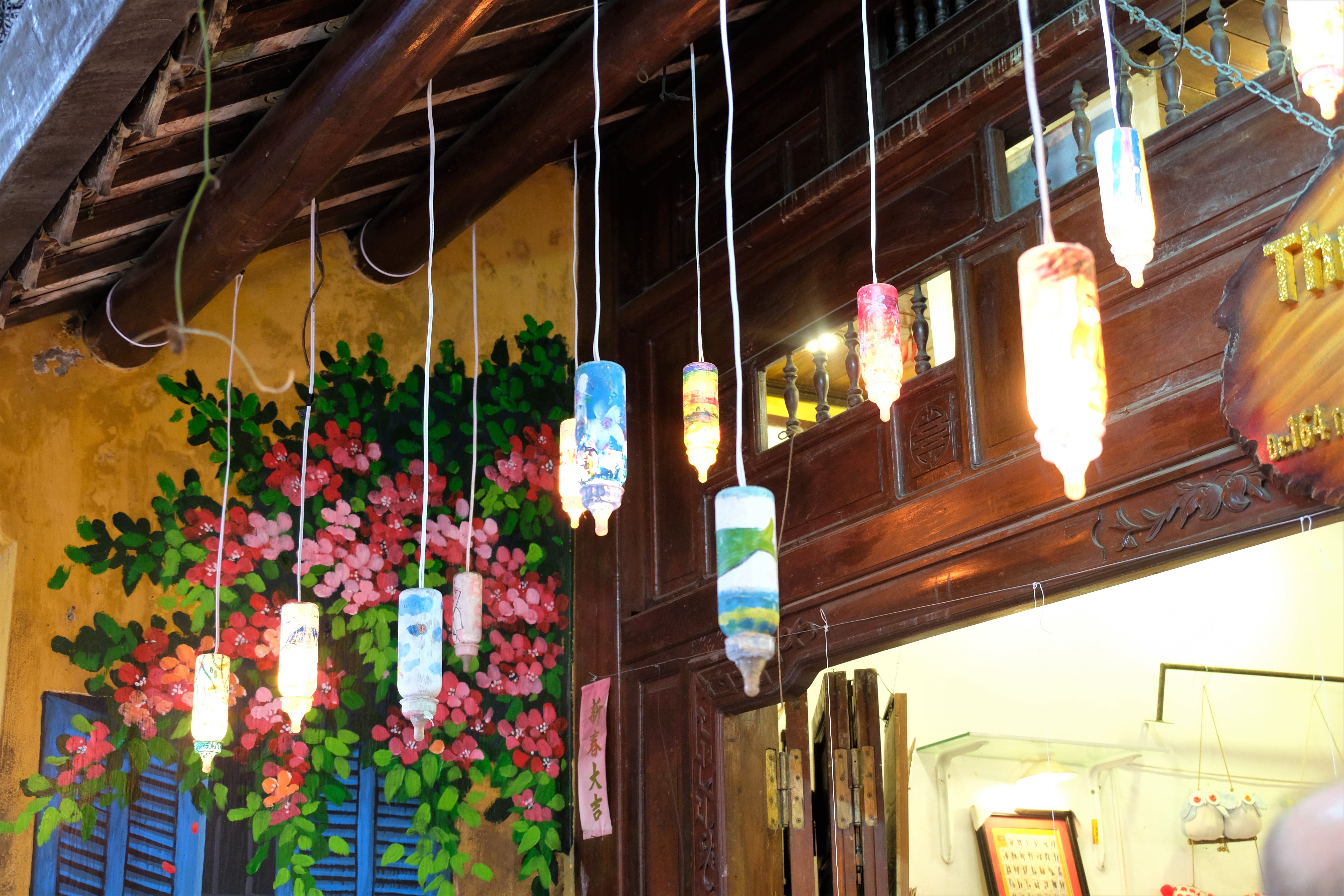

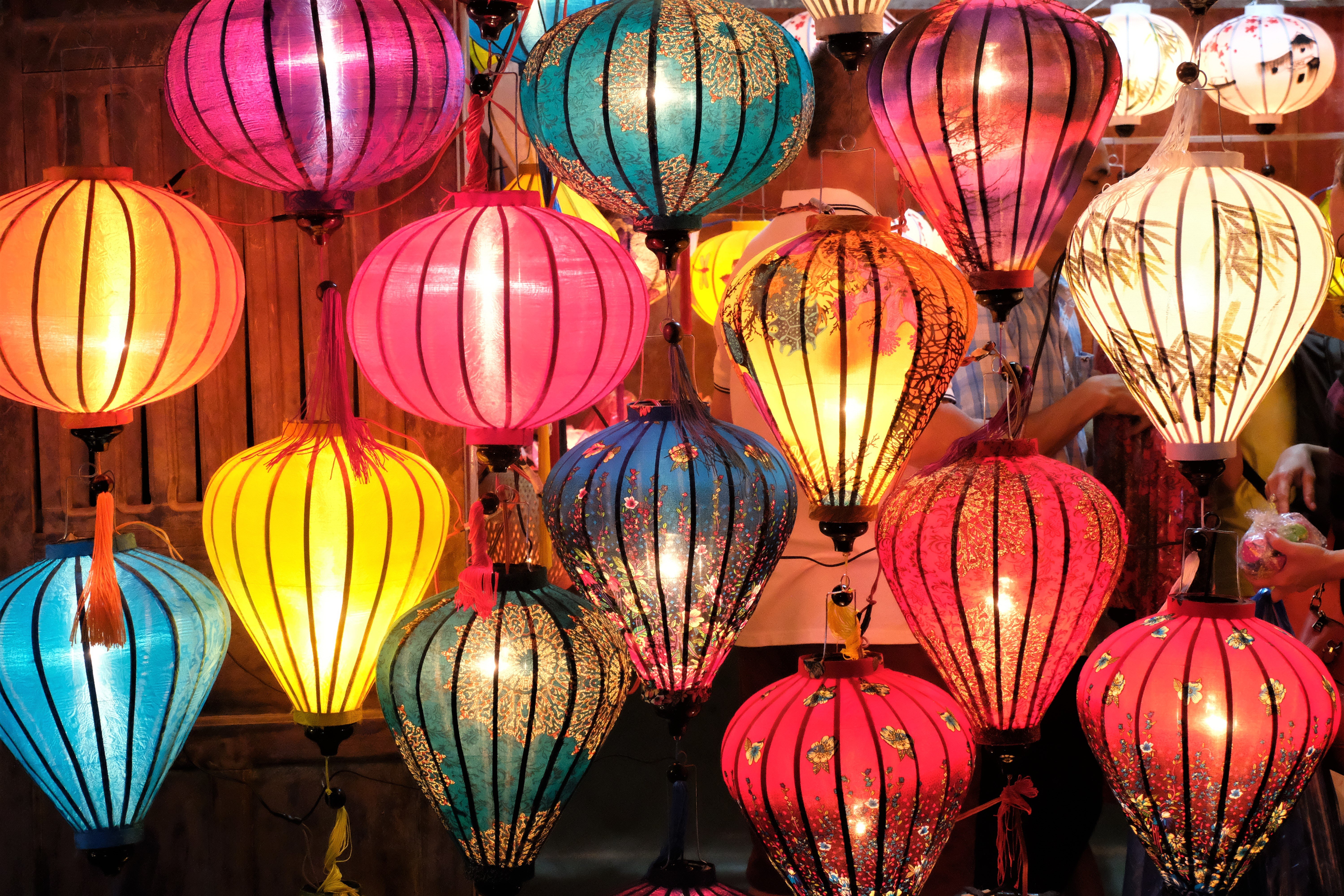
Hoi An is more than just An Bang &/or Old Town, with a population of circa. 120k people. The periphery around Old Town is packed with locals, stores, street food and many large karaoke halls. Riding past them at night I had many evening chuckling hearing pop star wanabees belting out western songs like banshees! No, I didn’t go in at give it a go. They take karaoke seriously here, the karaoke halls are like the flashy nightclubs inside and out, it is big business! Our modus operandi tended to be ride around the outskirts of town during the day and spend the evening in Ancient town. Jumping back to something I mentioned in my previous post, on many occasions heading back from Old Town to An Bang in the evening (it’s very safe, even very late at night) we saw many rats, bloody big one’s too! I’m in no means being derogatory about the area, and absolutely have no intention deterring people from visiting either, its just an observation – in my opinion it’s a reality of having water, so many open markets, dense population and economic climate. What I can say, is Hoi An Ancient town is clean as are the restaurants of which there are hundreds that serve delicious food…that includes the street food!
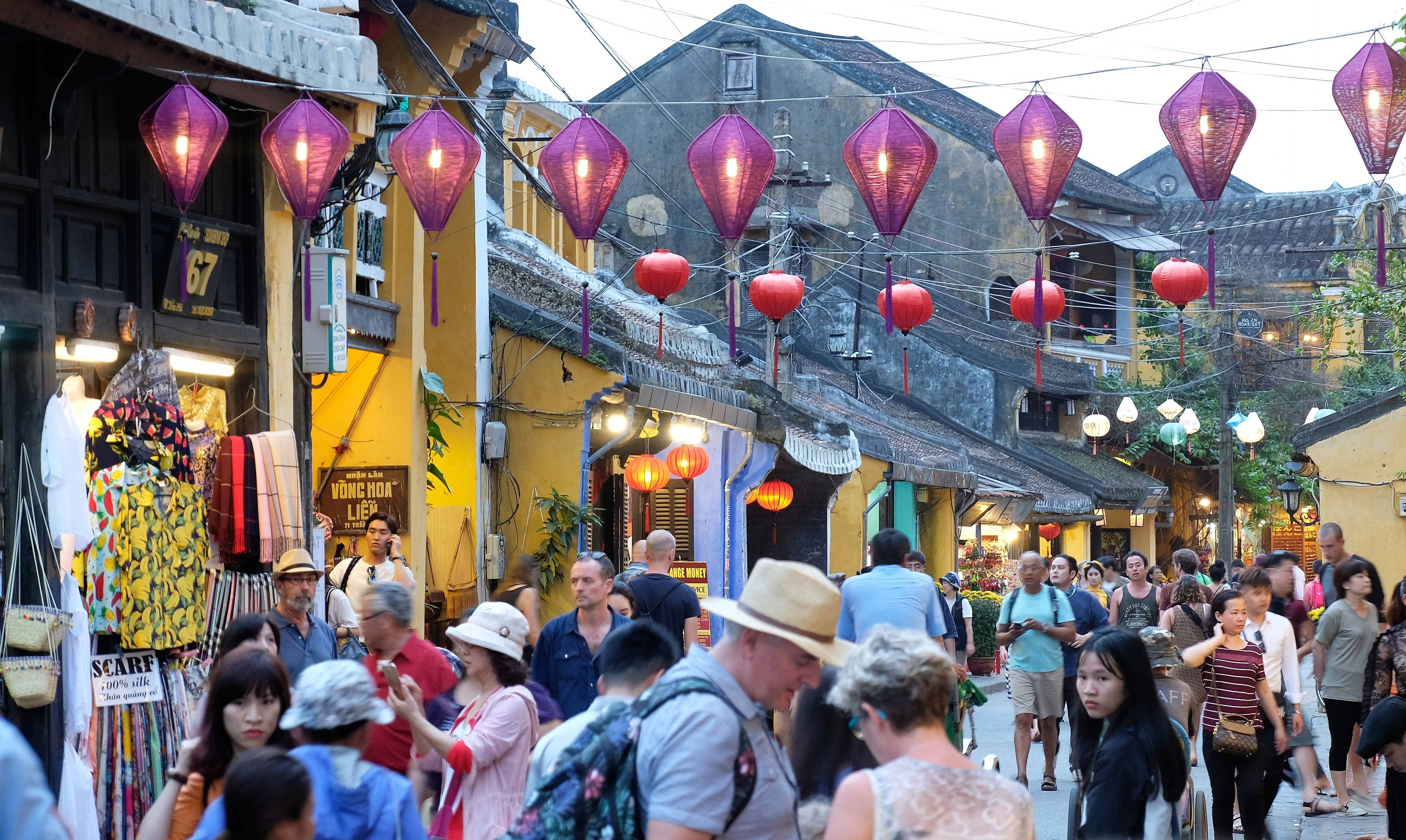
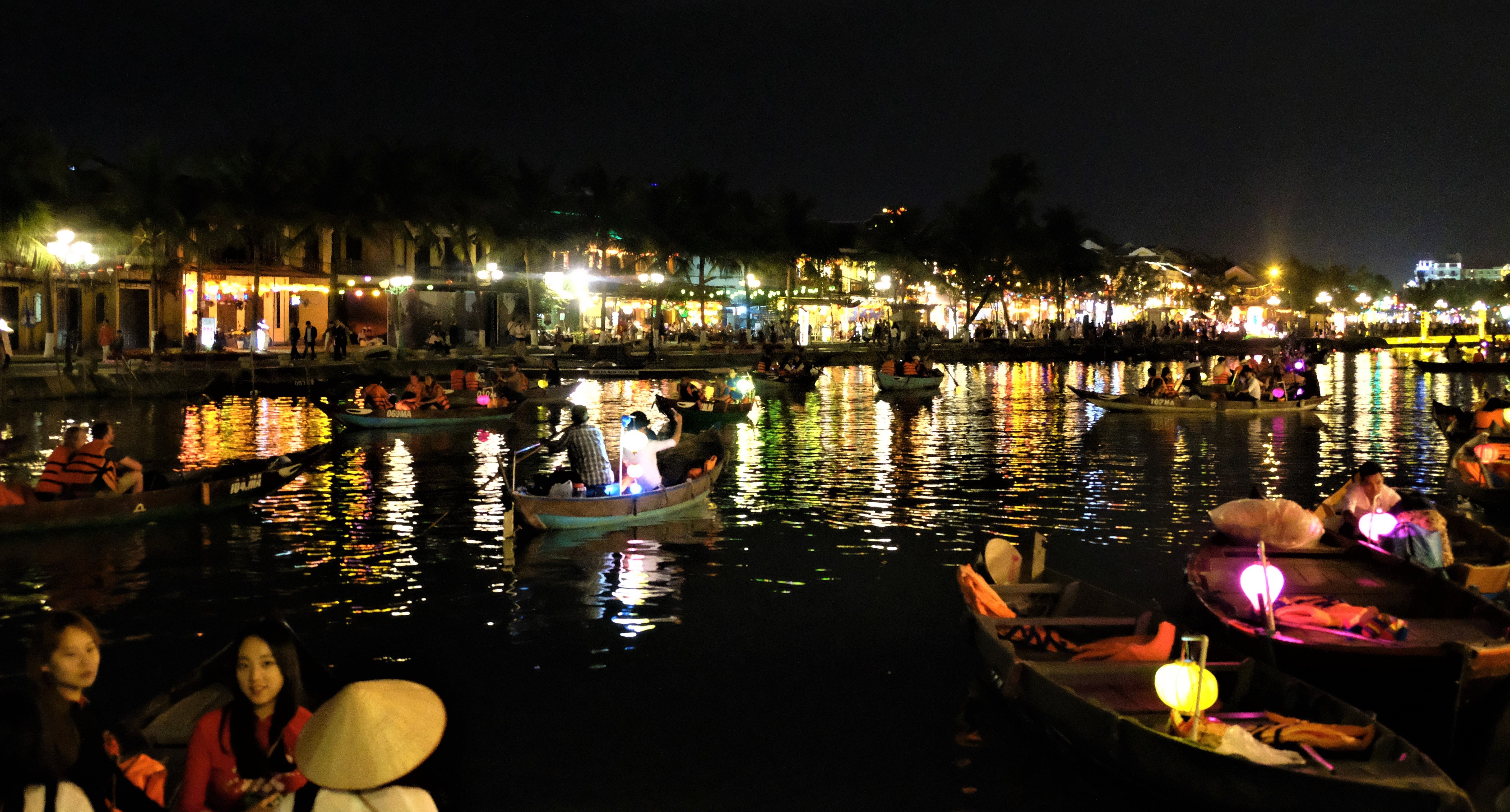
Water Puppet Show
One evening we decided to go to the Water Puppet Show at the Hoi An Theatre (just before Hoi An Ancient Town when heading into town from An Bang); not as famous as the theatre in Hanoi but the three of us all enjoyed the show in Hanoi so thought why not see another show. An open multipurpose theatre with semi outdoor seating, like an amphitheatre with a corrugated roof with the sides open and seats a few hundred. It wasn’t busy and with the heat and humidity I was happy not to be sitting inside a stuffy theatre. The show was entertaining even though I had seen it before, yes, the show was exactly the same (we didn’t know that when we bought the tickets) as the one I saw in Hanoi…just not as “flashy”. Having seen the show in Hanoi, the most famous of theatres in Vietnam (possibly globally) for Water Puppets any other theatre is likely to come across as second best. However, I’d highly recommend going to watch the show if you don’t/didn’t get a chance to see it in Hanoi.
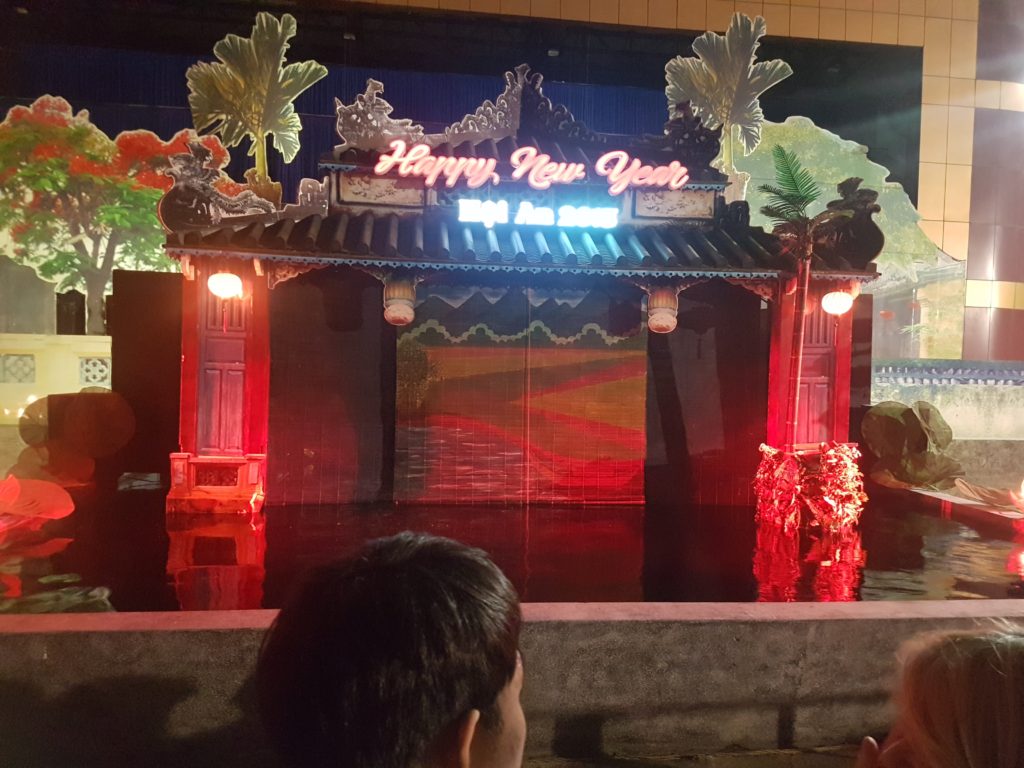
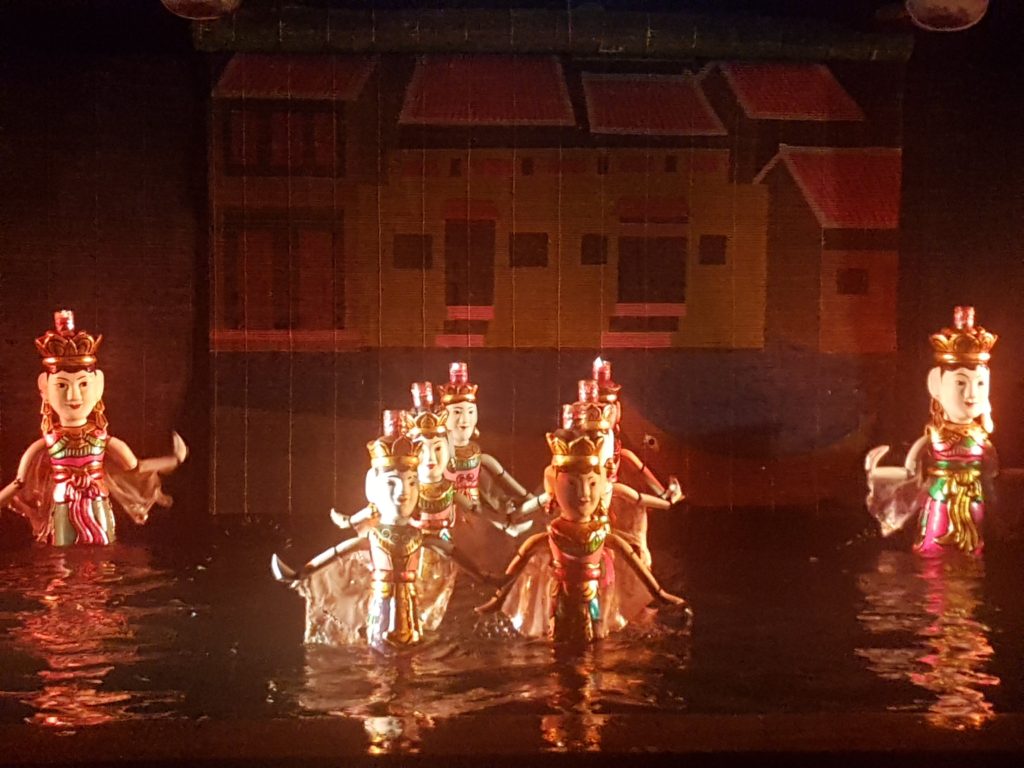
Even though I had seen the show before I still enjoyed it, it is something uniquely different and doubtful you’ll see anything else like it. The storyline is identical but that’s not why you go see the water puppets; it’s the puppets, music, spectacle and mythological drama of the story they tell in a simplistic and most creative of ways. This theatre is much more relaxed, you are able to get a much closer therefore clearer view of the show. Just like in Hanoi I was fascinated by the reticulating limbs of the puppets splashing around in the water, I would go again to either theatre tomorrow if the opportunity arose. Is it a life altering show, no, is it unique and enjoyable for all ages, yes – if you get the opportunity to see it I’d recommend you do so.
We were heading to Hoi An Ancient Town one evening deciding to take a new scenic route instead of the our usual quick one along the main road. Why a scenic route considering it was dark I don’t know, but familiarity can breed contempt &/or boredom (a saying one of my managers used to use, don’t fully agree with it), we seemed to try loads of different routes, why the hell not ?! We passed what I can only describe as a workshop/house; workshop downstairs (over spilling onto the pavement and into the road) and house at the back and on top. I couldn’t quite figure out if this was a residential, industrial or commercial area, in all probability it was all three in one…seems common in Vietnam. At first what made us stop was what they were making, colourful water floats and carnival type masks of various sizes.
After stopping to admire their work and like clockwork their friendly and inviting demeanour we found out it was a family business, we couldn’t quite get to how many family members. Just like everywhere else they were happy to invite us in and show us what they were up to. Considering it wasn’t a shop it was in true Vietnamese style that they let up nosily watch them at work and sift through the many things on display and lying about. In Vietnam they do things differently, a Health & Safety worker in the UK (most countries) would have had a heart attack going through this place – almost all the plugs had live wires pushed straight into the sockets, never mind the welding around the many flammable substances and materials. We spent near an hour there, and true to Vietnamese style they sold Julie one of their masks…for next to nothing.


Over the road was a communist party hall, closed now because it was early evening, yet every 15 minutes or so they would play government statements bellowing into the area through tannoys. I found this very interesting, so different to my own upbringing and experiences. Through my time in Vietnam I didn’t get the opportunity to have a thorough discussion with a local to get their thoughts and opinions on life and politics. Not that I would want to convert them, but how interesting it would be to get the ideals of someone who has had a totally different experience in their surroundings and upbringing – this is one of the main regrets I have about my two weeks in Vietnam.
Lantern Festival
Once a month on full moon they have the Lantern Festival in Hoi An Ancient Town. All the main streetlights are turned off especially along the river, the town is awash with colour radiating from lanterns crisscrossing above head in the streets and floating candle lanterns drifting along the river. Sure, the selling of the floating lanterns is a money maker from the tourists but there are no pushy sales people, they cost almost nothing too! Old Town changes it’s vibe almost daily, I’ve said so before, this is especially evident in the evenings – a great place to visit, that’s why we went back almost every night!
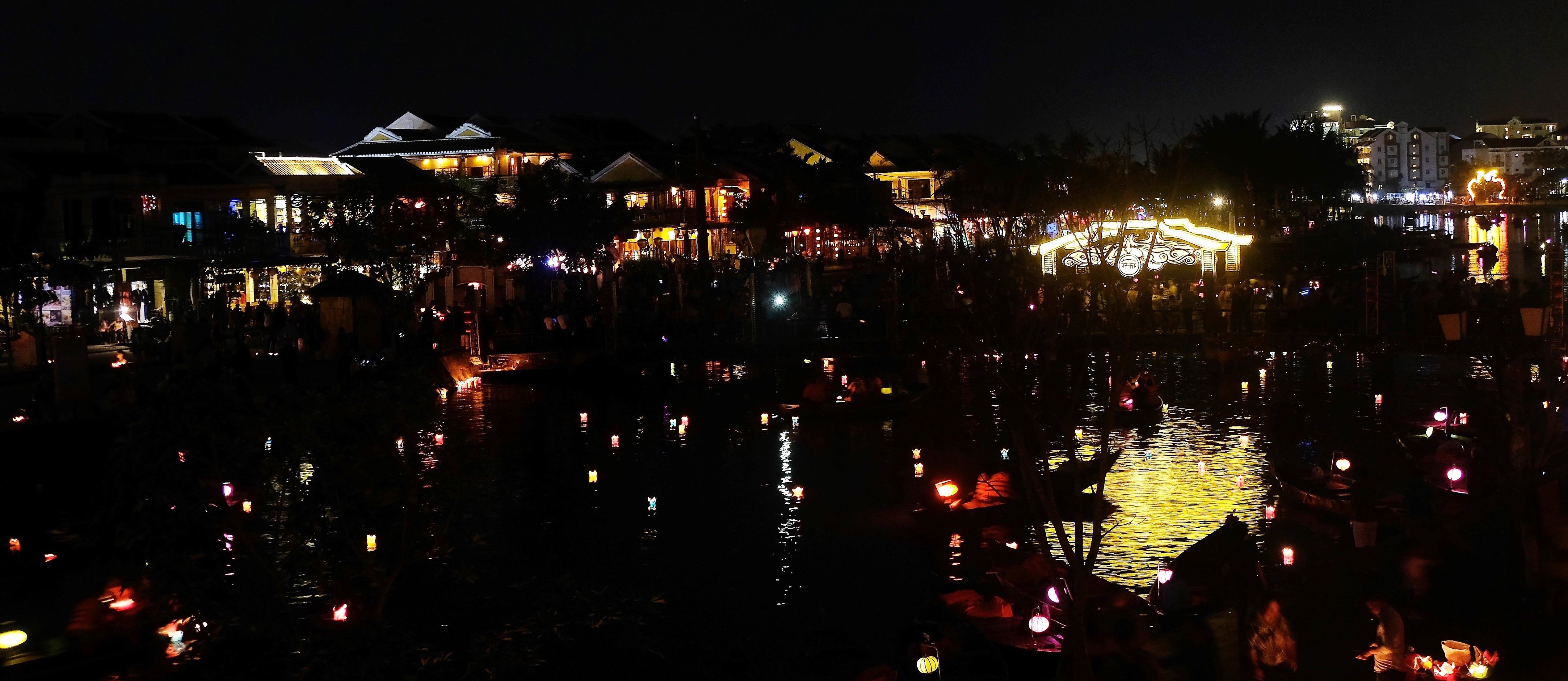

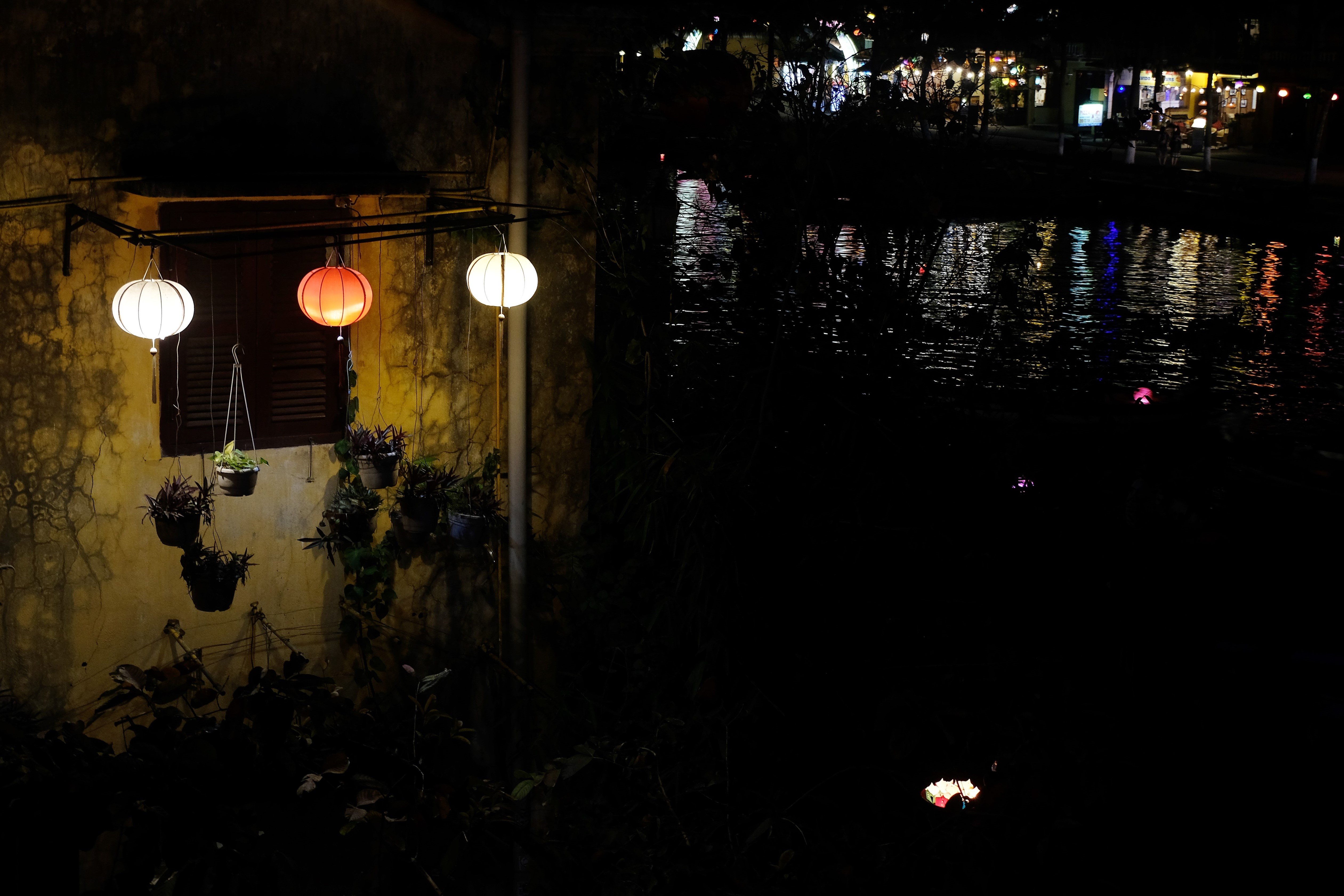
The lantern festival isn’t like a mardi gras though the place is abuzz including dragon dancing. We got to Old Town a little late on the evening of the Lantern Festival so missed the show of dragon dancers, we did however get to see them practising on a few occasions. Doing what must be like a cardio workout in seriously hot and humid conditions must be bloody tiring, not to mention wearing dragon costume! Watching them practise was insightful, I had no idea how physically demanding dragon dancing could be – I have a new-found respect and admiration for the performers.
Repeating myself, there is a lot to see in Old Town, like all places I’ve visited the more we went there the more I saw and noticed – I know that’s stating the obvious. Considering how many times we went we still didn’t see everything, many temples/monuments and places of historical interest…that’s just how things go when visiting a new place. There is an opportunity cost when visiting an area, you see some things at the expense of others in the hope that one day you will return to see the rest, time will tell – I’ve lived in London for 20 years and still have many things to see and experience. What I like about Hoi An is you could visit for a few hours, a day or a few and still be able to enjoy it. It’s the kind of place where you can stroll around the streets do nothing much other than looking and still have an interesting and enjoyable time.
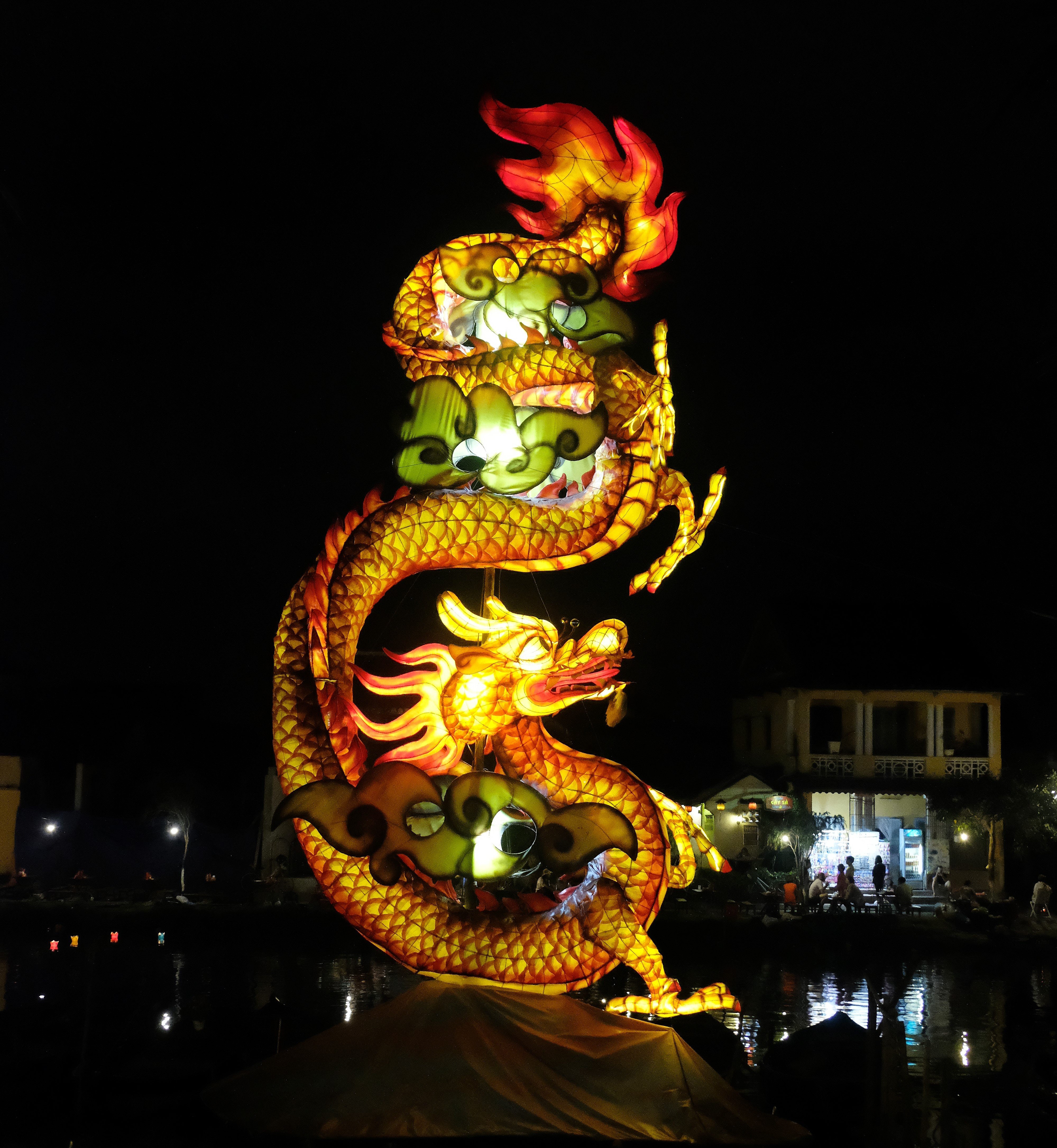

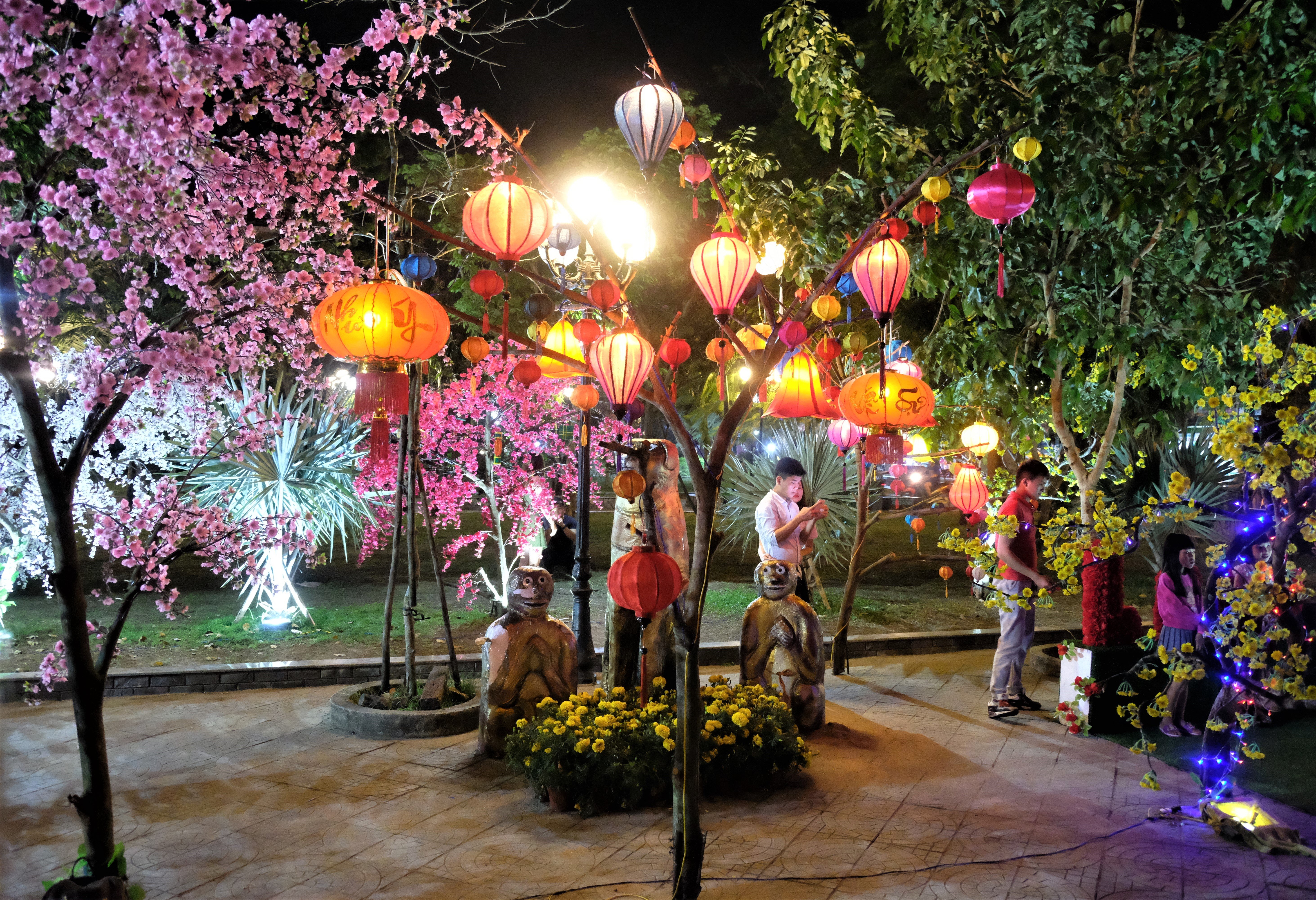
Hoi An Ancient Town is a rustic revival of a once prosperous town. The mix of cultures and colours easily confuses you at times as to where you are or even what continent you are in, that’s just part of what makes this place so interesting. It may be surrounded by farmland and to a degree poverty, but here the Vietnamese embrace their historical and current diversity combined with its challenging past – each age of time and all those who temporarily settled here from near and far left their mark now reflected in the varied architecture.
My time in Hoi An and Vietnam was coming to an end, two weeks was to short – I had not anticipated how much I would enjoy the country. The original plan was to track down to Ho Chi Minh City/Saigon, instead I got caught up with the sites and lifestyle of Hoi An, no regrets. During my time in Hoi An I did a day trip to My Son, that will be my next post, after that a day and a half trip to the island of Lao Cham will end my time in Vietnam before I headed off to Kuala Lumpur for a few days then Indonesia.
Always keen to get thoughts and feedback on my blog, if you have the time I would really appreciated it. My Son should be posted soon….internet permitting!
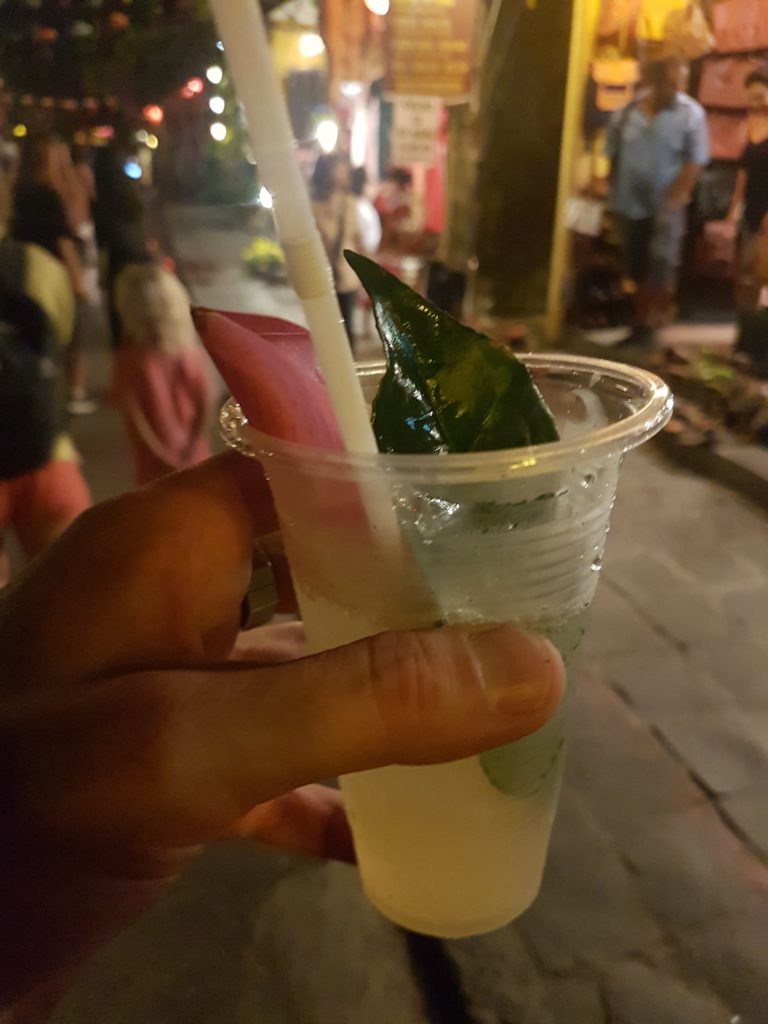
Quang Trieu / Cantonese Assembly Hall
A few additional pictures before signing off. Of the many famous buildings in Hoi An Ancient Town, Quang Trieu / Cantonese Assembly Hall has got to be in the top 5! Supposedly built by Cantonese merchants around 1885. Unlike most buildings of that time, the building was built in China, the sent to Hoi An. Similar to what you can do today if building a modular house/building. Quang Trieu / Cantonese Assembly Hall is a vivid building, with the Dragon Fountain taking centre stage in the courtyard. The fierce dragons made to look more like artworks with their coloured tiles and rounded edges. Though most of Hoi An Ancient Town has an uniformity there are a few buildings that break this norm, Quang Trieu / Cantonese Assembly Hall being one of them and the Covered Japanese Bridge the other of the most notable standouts!
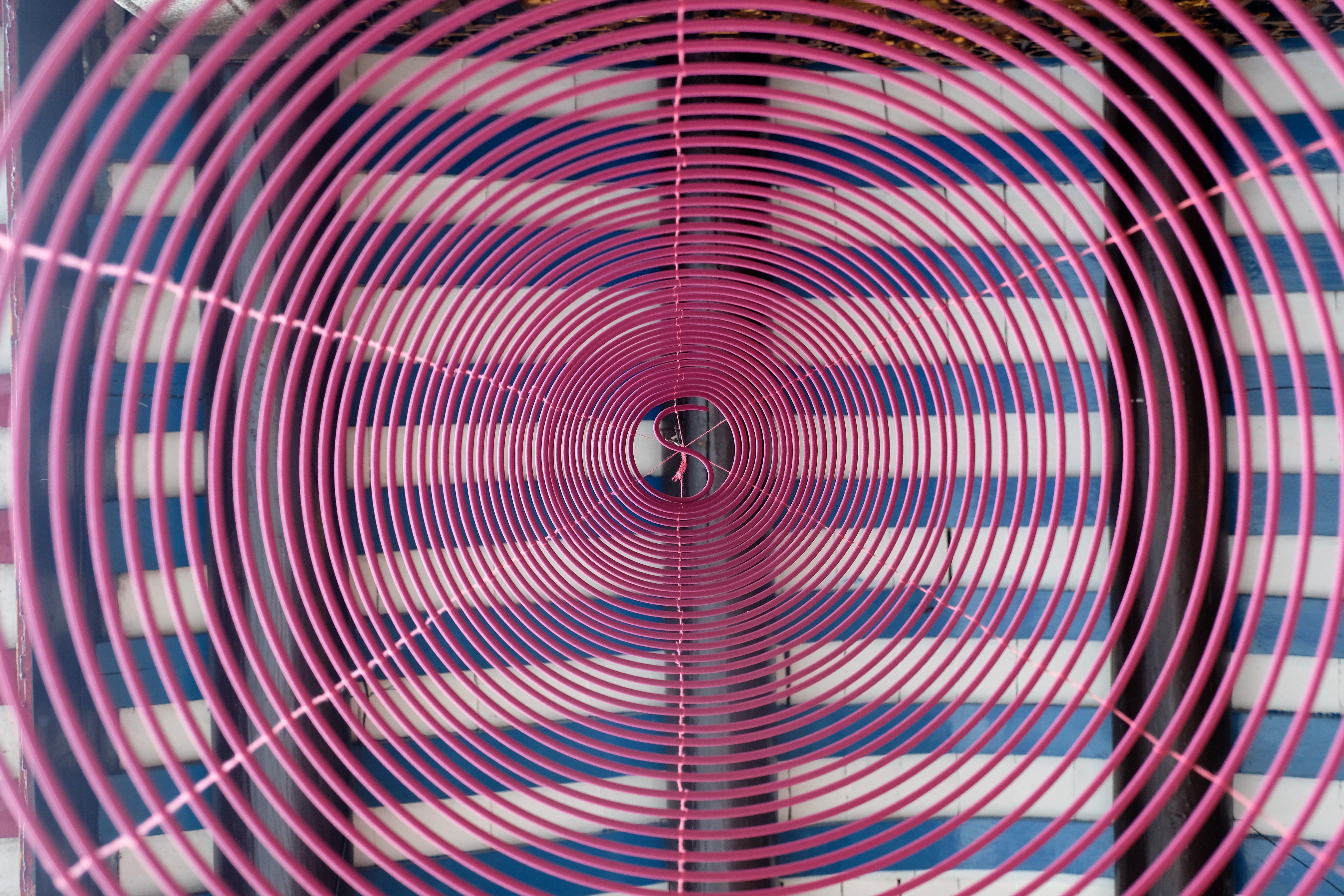
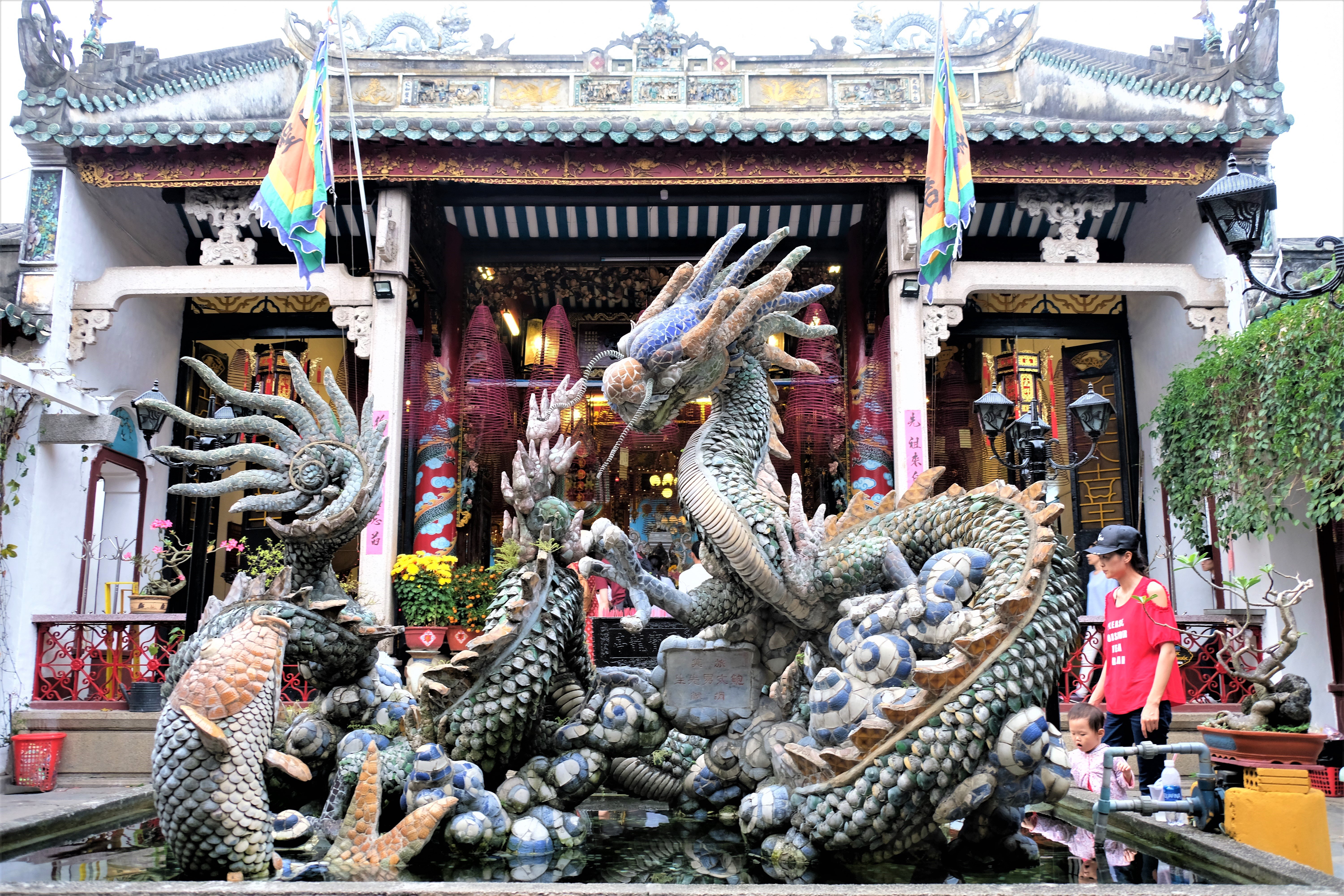
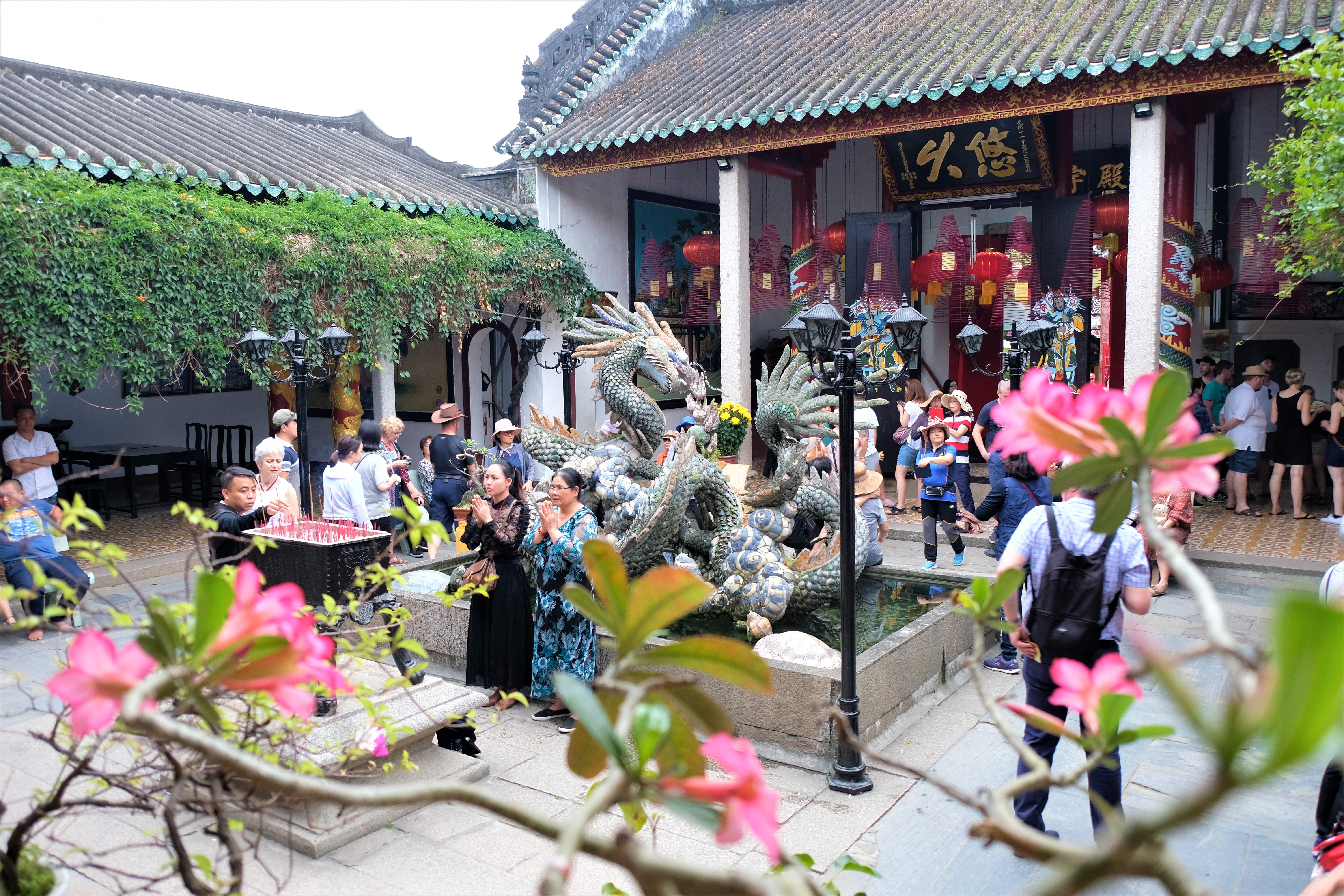
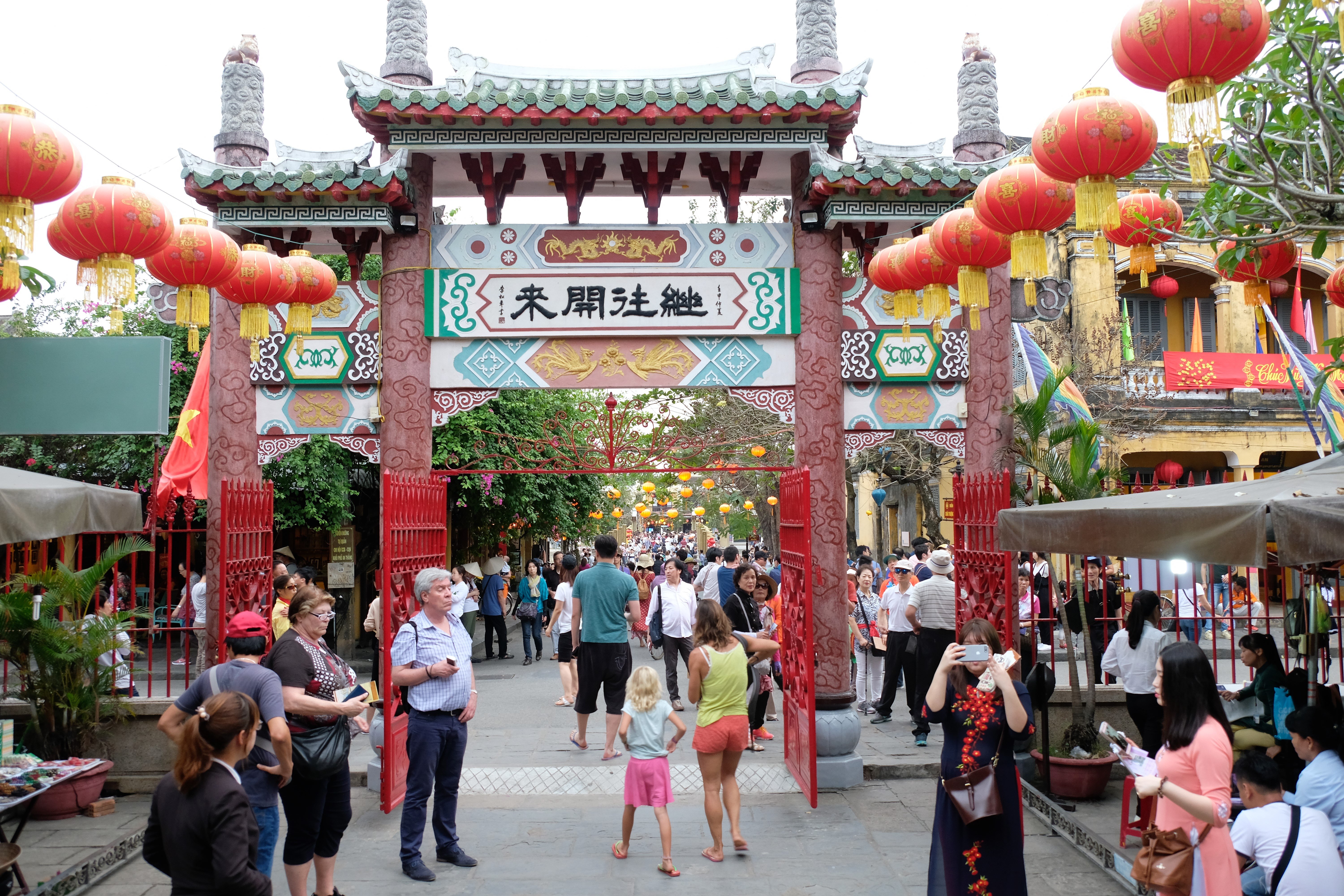



Such good reading, almost feels one in sometimes in your story, walking around there. Loved it.